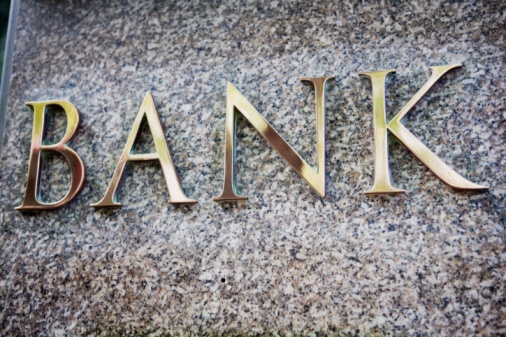Banking, finance, and taxes
After Earnings, Which Big Bank Stock Is Cheapest?
Published:
Last Updated:
Now that all four of the largest U.S. banks have reported fourth-quarter and full-year earnings, it seems like a good time to take a look at the results and try to figure out whether the banks’ investors have anything to look forward to in the current quarter and the rest of the year.
JPMorgan Chase & Co. (NYSE: JPM) is the country’s largest bank measured by assets, with some $2.57 trillion in total assets. In the fourth quarter of 2014, J.P. Morgan posted revenues of $23.55 billion and earnings per share (EPS) of $1.19, both a little short of consensus estimates. J.P. Morgan’s shares are trading at a slight premium to book value, and the stock’s forward price-to-earnings (P/E) ratio is 8.69. At a consensus price target of $67.59 and Friday’s closing price of $55.93, potential upside in the bank’s stock is almost 21%. The bank’s stock price rose about 7.6% in 2014.
Bank of America Corp. (NYSE: BAC) is the country’s largest bank by market cap, at around $324 billion and assets of about $2.1 trillion. In the fourth quarter, it reported EPS of $0.25 on revenues of $18.96 billion, this time well short of expectations. The price-to-book ratio on the stock is 0.72, and the forward P/E ratio is 9.23. With a consensus price target of $18.54 and a closing price on Friday of $15.38, the potential upside in the stock is also close to 21%. Its stock rose more than 14% last year.
ALSO READ: Not Even Goldman Sachs Escapes Bank Earnings Drag
Wells Fargo Corp. (NYSE: WFC) posted fourth-quarter EPS of $1.02 on revenues of $21.4 billion, mostly in line with expectations. Wells Fargo is the country’s second largest bank measured by market cap and claims assets of about $1.69 trillion. The bank’s price-to-book ratio is 1.60 and its forward P/E is 11.38. The consensus price target on the stock is $56.12 and shares closed at $51.64 on Friday, for an implied gain of about 8.7%. Wells Fargo’s shares gained about 20.5% in 2014.
Morgan Stanley (NYSE: MS) reported earnings early Tuesday, and the smallest of the nation’s big banks (market cap of around $67 billion and client assets of more than $2 trillion) posted EPS of $0.47 on revenues of $7.5 billion, both a little short of expectations. Morgan Stanley’s price-to-book ratio is 1.02 and its forward P/E is 11.79. The consensus price target on the stock is $38.86, and it closed at $34.89 on Friday, for an implied gain of about 11.4%. Morgan Stanley shares gained nearly 25% in 2014, the best of any of the four big banks.
From the look of things, J.P. Morgan is either a good buy or an underperformer. Its implied gain is virtually identical with that of Bank of America, but its share price rose just a little over half as much. Does Jamie Dimon have the stuff to put more money in investors’ pockets, or will he spend the first half of the year complaining about the fact that the gummint is out to get his and the other big banks?
ALSO READ: The Bullish and Bearish Case for J.P. Morgan and Big Banks in 2015
The view from here is that Bank of America — if it can gain control of its expenses — may have the best shot of producing the implied share price gain in 2015. The bank’s legal expenses for 2014 totaled $16.4 billion, up from $6.1 billion in 2013. The good news is that total non-interest expenses fell by more than $3 billion in the fourth quarter.
Finding a qualified financial advisor doesn’t have to be hard. SmartAsset’s free tool matches you with up to 3 fiduciary financial advisors in your area in 5 minutes. Each advisor has been vetted by SmartAsset and is held to a fiduciary standard to act in your best interests. If you’re ready to be matched with local advisors that can help you achieve your financial goals, get started now.
Thank you for reading! Have some feedback for us?
Contact the 24/7 Wall St. editorial team.